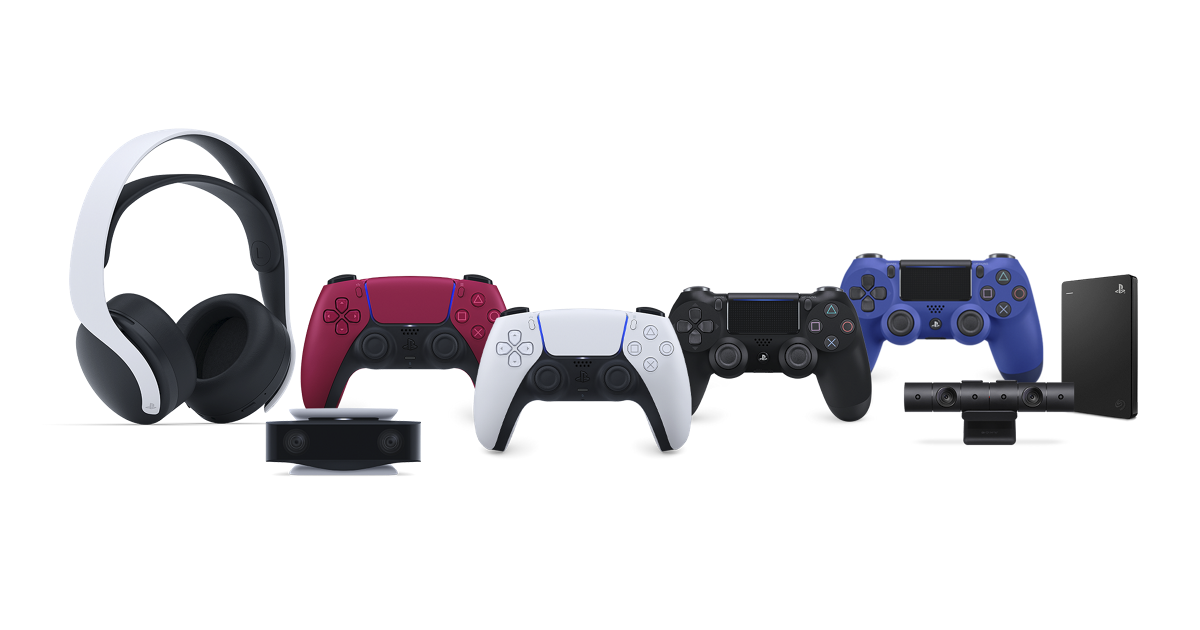GAF machine
Member
2005 -- A patent application is filed for a PSP DualShock dock. The rationale was that PS1/PS2 games were going to be “ported for execution on the portable gaming platform”; so it would be ideal if “the user can utilize substantially, if not identically, the same control sequence as used with the console system" to play them.
2006 -- Ken Kutaragi files two patent applications. The first is for a remote play controller, the second is for using the controller as a lift-to-wake universal remote. Gaming on the controller was limited to Remote Play, accessing games hosted on a server and downloadable mini-games (e.g., PS Minis and probably PS Mobile games) playable from internal storage. This remote play controller was his PSP successor; but it was shelved along with the DualShock dock and ultimately abandoned in favor of its derivative, the PS Vita and alternative, the Xperia Play.
2014 -- Gaikai’s David Perry is interviewed:
Do you ever wish the Vita had some extra shoulder buttons to match the DualShock?
Yeah, that’s what we need. I agree. It’s funny because you know I hope we get involved in more and more conversations as we become integrated into more things at Sony. These are the kind of conversations I really want to have.
2015 -- A patent application detailing the characteristics of a handheld that has grips and a full complement of DualShock inputs is filed. By this time, Gaikai is a few years into its integration with SIE and the DualSense is in development.
2016 -- Kutaragi’s remote play controller application gets updated from ‘abandoned’ status to ‘active’ status. The change in status comes when PS Vita is shaky and on the ropes.
May 18, 2019 -- A patent application is filed for a ‘Network Connected Controller for Direct to Cloud Gaming’. David Perry is listed as one of its co-inventors, despite having left SIE in 2017. Sections of the application say that the device can be DualShock-like, have an integrated display and connect directly to cloud-gaming servers over Wi-Fi. This application is published two days after Kutaragi’s newly active remote play controller application is ‘granted’ (i.e., protected against infringement). Deeper discussions about Project Q'taragi move forward.
May 21, 2019 -- Jim Ryan tells investors/analysts that SIE plans to “maximize off-console opportunity” as a feature of PS Now. He makes this public knowing that SIE is privately pursuing Project Q. A DualSense-like direct-to-cloud controller that has a sizable integrated display is a surefire way to help maximize PS Now's off-console potential.
2020 -- A much closer visual approximation to Project Q appears in a patent application under the guise of a DualShock 4 backbone for smartphones.
2021 -- A patent application is filed for a motion-sensing ‘Universal control’ feature that builds on Kutaragi’s lift-to-wake universal remote control application. One of the co-inventors (Rui Yang) was a Qualcomm Sr. System Test Engineer who also worked on Android platforms in the past. Both applications seem to hint that Project Q will also act as a universal remote control for certain electronics.
2023 -- Video surfaces of Project Q running Android. SIE choosing Android makes bringing their mobile games to the handheld highly likely, and makes the approval of VoWifi apps like NumberSync a strong possibility. Unlike smartphones, Project Q is poised to be a precision mobile gaming device; while facilitating the kind of communication that Kutaragi was once wary of.
Beyond 2023
Jim Ryan believes that “cloud technology will become a meaningful component of how gamers access games between 2025 and 2035”.
Project Q's remote play has its place, but SIE didn’t acquire Gaikai and buy OnLive's choicest patents only for remote play to be the handheld's sole purpose.
I think Project Q exists to bridge the divides between home console gaming, cloud-gaming, shared multi-player gaming and mobile gaming in a PS-centric way; but not only to bridge the divides within gaming, the divides between on-the-go gaming, viewing and communication as well.
This will bare out across PSN, social networks and individual experiences as Project Q leverages PS Plus, Share Play, Share Screen, etc. in the coming years; and if paired with a dock that also functions as a pass-through streamer (i.e, a potential streaming only PS TV successor that couples with Apple TV, Chromecast, Roku, etc.), create a situation where Project Q seriously competes against Switch 2 on price and Xbox's rumored Keystone on features.
2006 -- Ken Kutaragi files two patent applications. The first is for a remote play controller, the second is for using the controller as a lift-to-wake universal remote. Gaming on the controller was limited to Remote Play, accessing games hosted on a server and downloadable mini-games (e.g., PS Minis and probably PS Mobile games) playable from internal storage. This remote play controller was his PSP successor; but it was shelved along with the DualShock dock and ultimately abandoned in favor of its derivative, the PS Vita and alternative, the Xperia Play.
2014 -- Gaikai’s David Perry is interviewed:
Do you ever wish the Vita had some extra shoulder buttons to match the DualShock?
Yeah, that’s what we need. I agree. It’s funny because you know I hope we get involved in more and more conversations as we become integrated into more things at Sony. These are the kind of conversations I really want to have.
2015 -- A patent application detailing the characteristics of a handheld that has grips and a full complement of DualShock inputs is filed. By this time, Gaikai is a few years into its integration with SIE and the DualSense is in development.
2016 -- Kutaragi’s remote play controller application gets updated from ‘abandoned’ status to ‘active’ status. The change in status comes when PS Vita is shaky and on the ropes.
May 18, 2019 -- A patent application is filed for a ‘Network Connected Controller for Direct to Cloud Gaming’. David Perry is listed as one of its co-inventors, despite having left SIE in 2017. Sections of the application say that the device can be DualShock-like, have an integrated display and connect directly to cloud-gaming servers over Wi-Fi. This application is published two days after Kutaragi’s newly active remote play controller application is ‘granted’ (i.e., protected against infringement). Deeper discussions about Project Q'taragi move forward.
May 21, 2019 -- Jim Ryan tells investors/analysts that SIE plans to “maximize off-console opportunity” as a feature of PS Now. He makes this public knowing that SIE is privately pursuing Project Q. A DualSense-like direct-to-cloud controller that has a sizable integrated display is a surefire way to help maximize PS Now's off-console potential.
2020 -- A much closer visual approximation to Project Q appears in a patent application under the guise of a DualShock 4 backbone for smartphones.
2021 -- A patent application is filed for a motion-sensing ‘Universal control’ feature that builds on Kutaragi’s lift-to-wake universal remote control application. One of the co-inventors (Rui Yang) was a Qualcomm Sr. System Test Engineer who also worked on Android platforms in the past. Both applications seem to hint that Project Q will also act as a universal remote control for certain electronics.
2023 -- Video surfaces of Project Q running Android. SIE choosing Android makes bringing their mobile games to the handheld highly likely, and makes the approval of VoWifi apps like NumberSync a strong possibility. Unlike smartphones, Project Q is poised to be a precision mobile gaming device; while facilitating the kind of communication that Kutaragi was once wary of.
Beyond 2023
Jim Ryan believes that “cloud technology will become a meaningful component of how gamers access games between 2025 and 2035”.
Project Q's remote play has its place, but SIE didn’t acquire Gaikai and buy OnLive's choicest patents only for remote play to be the handheld's sole purpose.
I think Project Q exists to bridge the divides between home console gaming, cloud-gaming, shared multi-player gaming and mobile gaming in a PS-centric way; but not only to bridge the divides within gaming, the divides between on-the-go gaming, viewing and communication as well.
This will bare out across PSN, social networks and individual experiences as Project Q leverages PS Plus, Share Play, Share Screen, etc. in the coming years; and if paired with a dock that also functions as a pass-through streamer (i.e, a potential streaming only PS TV successor that couples with Apple TV, Chromecast, Roku, etc.), create a situation where Project Q seriously competes against Switch 2 on price and Xbox's rumored Keystone on features.
Last edited:













